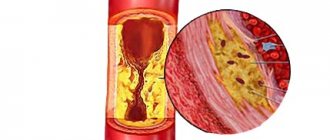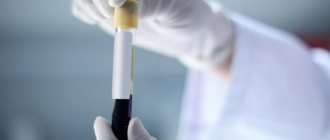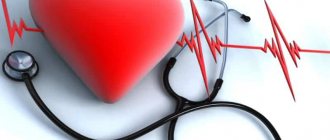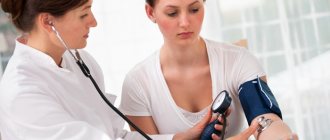Physical inactivity (lack of mobility) is a pathological condition that develops with significant limitation of physical activity and leads to dysfunction of the musculoskeletal system, cardiovascular system, gastrointestinal and respiratory tract, etc.
Source: simptomer.ru
Mobility is a natural property of a person, which lies in his ability to carry out active activities. The main functions of motor activity are:
- maintaining homeostasis;
- maintaining muscle tone, blood vessels, and with them the normal functioning of the body;
- development of individual abilities and properties;
- achieving a high effect of motor activity (sports, work skills).
As a result of technological progress, since the beginning of the last century, the share of physical labor in human life has decreased by 150–200 times. At the same time, mortality from cardiovascular pathologies increased approximately 6 times. The prevalence of physical inactivity is increasing due to urbanization, mechanization and automation of work and everyday life, and the increasing role of means of communication in modern society. According to some studies, an increase in physical activity leads to a decrease in morbidity rates by about 45%.
With timely measures taken, the prognosis is favorable; most pathological changes caused by physical inactivity due to an unhealthy lifestyle are reversible.
Causes and risk factors
Physical inactivity can be caused by objective reasons, for example, disability, severe and long-term illness. But in most cases it is associated with improper lifestyle organization or sedentary work.
The main risk factors for the development of physical inactivity include:
- insufficient physical activity;
- excess body weight;
- psychological disorders;
- somatic diseases;
- genetic factors;
- intrauterine fetal hypoxia;
- birth injuries;
- bad habits.
Diagnostics
Physical inactivity and its symptoms are often difficult to diagnose independently - after all, a dozen other similar diseases have approximately the same set of symptoms. But its presence in a neglected state is indicated by excess weight, and in the early period - signs of general overwork of the body.
In any case, the doctor conducts complete clinical studies to exclude the presence of more serious diseases in the anamnesis - endocrine abnormalities, cancer, diabetes, diseases of the cardiovascular system.
Symptoms of physical inactivity
Symptoms of physical inactivity appear gradually. These include increasing fatigue, rapid fatigue, decreased performance, sleep disturbances, increased causeless nervousness, regular headaches of varying intensity, increased risk of fractures, weight gain, shortness of breath with little physical activity, and back pain. Women may develop anorgasmia, and men may experience erectile dysfunction.
Due to insufficient physical activity, strength indicators decrease, muscle volume and mass decrease, neuro-reflex connections are disrupted, which can lead to the development of vegetative-vascular dystonia and depressive states. With a long course of the pathological process, bone mass gradually decreases, as a result of which the functions of the spine and joints are disrupted. Due to the weakening of the ligamentous apparatus, intervertebral hernias occur. In patients with physical inactivity, as a rule, there is an increase in heart rate both during exercise and at rest, as well as an increase in blood pressure.
Source: simptomer.ru
Correction of the pathological condition, in addition to a gradual increase in physical activity, includes physiotherapeutic methods, massage, and diet therapy.
Move! The dangers of physical inactivity and physical activity every day
A sedentary lifestyle is not only one of the leading causes of obesity. Physical inactivity is one of the most common risk factors for various diseases.
Today we have no need for unnecessary movements, everything is geared towards a sedentary lifestyle. Most modern people have sedentary jobs, which they also get to while sitting, so 11-12 hours a day are spent at the “fifth point”. Returning home, many continue to “practice” physical inactivity, lying on the sofa in front of the TV or buried in the phone, after having eaten to their fill.
Formation of physical inactivity in children
A serious decrease in motor activity is also observed in modern children. More and more cases of physical inactivity are being recorded by doctors at the stage when easy preventive measures can no longer get rid of it. Some children, up to 5-6 years old, are carried in strollers or on bicycles with a control handle. Children spend the lion's part of their time in a car seat, moving between sections, kindergartens, schools, where they are constantly developed intellectually... while sitting, accompanied by moral teachings “don’t run, don’t jump, don’t spin.”
Schoolchildren are prohibited from running during breaks. Many schools have introduced removable shoes; it turns out that for the sake of cleanliness at school, children are deprived of the opportunity to run out into the school yard during recess, run, play, and physically unwind. Teachers, of course, have made their lives somewhat easier, but do schools really exist for them?
At home, children also sit in front of homework/cartoons/gadgets, having fortified themselves with some carbohydrate food for dinner. Nobody really wants to move anymore... So the child develops hypoxia, a heart like a pensioner’s, and circulatory problems.
Sitting for a long time is not physiological, especially for children. Activity is extremely important for boys! At least 10-12 hours of physical exercise per week, if you do not want to “get” a teenager with a metabolic disorder.
What does physical inactivity lead to?
There is not a single organ that is not affected by physical inactivity! A sedentary lifestyle increases the risk of death from physiological causes by 22-40%!
The musculoskeletal system weakens
The load on the spine is 1.5 times higher than when we stand.
If you are also used to leaning forward towards the monitor, it grows even more. Untrained muscles begin to get tired, the spine bends, and intervertebral discs are compressed, especially in the cervical and lumbar regions. In this case, damage to the cervical spine causes problems with blood supply to the brain. The result is
headaches, weakness, dizziness, and blurred vision.
Thought processes, memory and concentration deteriorate
As a result of a decrease in oxygen supply to the brain, the production of substances necessary for a stable mood, sharp thinking, and good memory slows down.
The activity of the cardiovascular system is disrupted.
The heart muscle becomes underutilized and loses its shape.
Over time, this leads to an unreasonable increase in heart rate and hypertension. Blood circulation deteriorates, the walls of blood vessels lose tone, varicose veins develop, metabolic processes are disrupted, which contributes to increased fragility of blood vessels. Men may experience problems with erection (a good erection is
an indicator of a good cardiovascular system). Researchers call physical inactivity one of the common causes of erectile dysfunction.
Decreased bone density
The more pressure the surrounding muscles put on the bone, the harder it becomes. When we sit, the muscles hardly contract, which means our legs become weaker.
Respiratory muscle strength decreases
Breathing with insufficient physical activity is characterized by a decrease in the vital capacity of the lungs, depth of breathing, minute volume of breathing and maximum pulmonary ventilation. Oxygen demand and oxygen debt during work increase sharply. The basal metabolism decreases.
Stagnation occurs in the pelvic organs
Prolonged immobility also leads to chronic diseases of the urinary system. In teenage girls and women, the cycle changes, varicose veins and hemorrhoids appear. Blood stagnation also increases the likelihood of thrombosis, and this is directly life-threatening.
Intestinal motility slows down
This threatens constipation, and over the years
-
serious diseases of the colon.
Why is physical activity still important?
Helps maintain a clear mind as you age
Regular physical activity is especially important for older adults as aging, combined with oxidative stress and inflammation, causes changes in brain structure and function.
If you want to remain sane in old age ,
lead an active lifestyle.
Positively affects sleep
If you don't sleep well
,
you don't move much. Scientists have proven that moderate activity during the day improves sleep quality.
Improves lymph flow
With physical inactivity, the lymphatic system, which performs the function of removing toxins, turns into a stagnant garbage dump.
Lymphostasis is a kind of intoxication, which leads to increased load on the liver, kidneys, and intestines. Swelling, cellulite, bags under the eyes, headaches, sinusitis, decreased immunity -
all this may indicate lymph stagnation.
Remember: lymph loves movement -
fast walking, jumping, swimming.
What kind of physical activity should you have?
Do you want to live longer —
get active. Just remember, in everything you need a golden mean: increased physical activity (professional sports) is just as harmful as low activity.
The recommended minimum of physical activity - 150 minutes per week (fitness, running, intense walking) - already reduces the risk of death from any physiological causes! Your standard is 750-800 minutes of physical activity per week. The ideal option is to combine strength and aerobic exercise, especially when losing weight.
Here is a simple guide to action: Buy a pedometer or install a similar application on your phone and take two walks every day of 4,000 - 6,000 steps at an accelerated pace. Walk -
This is walking with your head raised, your back straight, with a quick, confident step, and not at a speed of 50 cm per minute, with your head buried in your phone.
Great option for physical activity —
Nordic walking.
At home, having carefully studied the technique, start doing the plank, from the simplest level and minimum time, 3-4 approaches per day. When working sedentarily, be sure to get up every half hour, just walk around the office, at least to the toilet, where you can stretch and jump. At worst, find a set of exercises on the Internet that you can do right at your workplace, without leaving your desk.
And one last thing. If you spent the whole day sitting and then decided to exercise for an hour —
don't think you're great. You need to move throughout the day: stand up, jump, stretch.
If you decide to take a walk, don’t do it 5-10 km at a time; you need to stretch out the pleasure over the whole day. By the way, stairs are great exercise, forget about elevators and escalators. Sex is also an activity, but only if you don’t just lie there and puff like a log.
Treatment
In case of physical inactivity that has developed against the background of a somatic disease, treatment of the underlying pathological process is first required. It is also necessary to eliminate the unfavorable factors that contributed to the development of physical inactivity.
Correction of the pathological condition, in addition to a gradual increase in physical activity, includes physiotherapeutic methods, massage, and diet therapy. To restore the functions of organs and body systems during physical inactivity, the following are recommended:
- physical therapy – you should start with it, especially with physical inactivity that has developed against the background of somatic diseases;
- aerobic physical activity (fast walking, running, badminton, tennis, skiing);
- strength exercises;
- exercises to stretch muscles and ligaments.
For physical inactivity that has developed against the background of psychological problems, it is recommended to work with a psychologist or psychotherapist. Children, as well as adults, are recommended to play outdoor games, play sports or dance, and travel.
According to some studies, an increase in physical activity leads to a decrease in morbidity rates by about 45%.
Therapeutic measures
If symptoms of physical inactivity are observed, you should contact a competent specialist for diagnosis. This is necessary, because the symptoms of physical inactivity are not specific and may be symptoms of other developing and progressive diseases. Treatment is selected depending on the degree of the disease and the patient’s immediate condition. First of all, it is necessary to find out the reason that led to physical inactivity and eliminate it. Treatment is mainly aimed at concomitant diseases and elimination of consequences.
Nowadays, many people lead an inactive lifestyle - whether by choice or not, we are becoming less active. Vehicles and sedentary work, laziness and reluctance to exercise - everyone has their own reason. Physical inactivity, that is, weakening of muscles, is a consequence of a minimum of movements and a maximum of bad habits.
There is an opinion that physical inactivity has only one symptom – obesity. But growing weight is not the only manifestation of the disease. In addition, there may be increased drowsiness, which manifests itself even if you get a good rest at night. Efficiency decreases and irritation increases - psycho-emotional disorders can manifest themselves in a bad mood and painful dissatisfaction.
If one or more alarming symptoms appear, it is better to consult a doctor - a high-quality diagnosis will allow you to better understand the causes of the disease and determine a treatment regimen.
Constant fatigue is a companion to physical inactivity. Even after a weekend and a long sleep, you feel a lack of strength. Also, appetite often decreases - we are not talking about snacks, but about a full meal. It is from eating sweets, seeds, etc. Obesity may begin to develop.
Physical inactivity is often accompanied by obesity.
Considering the consumption of junk food and lack of exercise, the consequences of physical inactivity are very serious. That is why it is important to know that cleaning the house or going shopping is not considered an active lifestyle - it is necessary to take drastic measures, without which the body’s condition will worsen.
Consequences and prevention of physical inactivity
Weight gain is just the tip of the iceberg. If you don’t make an effort and don’t fight physical inactivity, you may find that it’s hard for you to climb the stairs or walk a couple of kilometers - this reminds you of muscle tissue atrophy.
Disturbances in brain function are manifested by drowsiness and headaches - little oxygen reaches the brain tissues. Weakening of the back muscles can lead to curvature of the spine. Disruption of metabolic processes leads to the development of atherosclerosis - this means that blood pressure will be unstable and the walls of blood vessels will become brittle.
What prevention of physical inactivity will help avoid the disease? It's not difficult at all - a healthy lifestyle and more walking. Even the busiest person can take a few minutes to exercise in the morning - you need to take care of your health responsibly!
If you have children, you can replace the usual rest on a bench while walking with them with active recreation - hikes, excursions to parks and public gardens can diversify your vacation and make it more interesting. Avoiding the elevator will help tone your leg muscles and strengthen your back - feel free to take the stairs!
Sedentary work does not always mean being in an office chair for 8-9 hours. Every couple of hours it is useful to get up to warm up - tilting the head and turning the body can not only give strength, but also give rest to the eyes. Plus, stretching in the middle of your workday is a great way to avoid joint pain.
At first glance, it seems that it is not at all difficult to engage in prevention, but there is a certain difficulty - you need to follow all the recommendations regularly, without missing a single day, holidays and weekends should also be filled with vital energy and activity.










